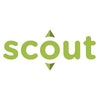Yes, most RFP software is designed to be accessed from numerous devices and platforms, including PCs, laptops, tablets, and smartphones. They are compatible with popular operating systems such as Windows, MacOS, and Linux. This enables customers to access and work on their RFPs from any location and device, providing flexibility and convenience. Additionally, some RFP software includes mobile apps for on-the-go access.
List of Best RFP Software
Expedience Proposal Software is a solution for crafting compelling sales proposals and RFP responses in Microsoft Word. Utilizing cutting-edge AI technology, it streamlines time-consuming tasks, allowing your team to focus on creating customized, win...Read More Expedience Proposal Software
Professional Document Analyzer solution for creating compliance matrices with ease! Our user-friendly online software simplifies the process, saving you time and effort. No technical expertise is required and your data remains confidential. Perfect f...Read More Professional Document Analyzer
SalesEdge is the premier software for elevating RFP responses and sales proposals. Powered by advanced AI technology, SalesEdge drives unparalleled efficiency, accuracy, and compliance with requirements, resulting in an impressive 40% enhancement in...Read More SalesEdge
TYASuite Procurement to Pay is a procurement tool that streamlines processes, optimizes costs, and boosts cash flow. Its intuitive interface and automated features simplify complex approval processes, giving you a unified view of your entire procurem...Read More TYASuite Procurement to Pay
Krinati Sourcing, the premier solution for simplifying purchasing processes for businesses. Our platform includes RFIs and RFPs for direct spend categories such as capex, packaging, and logistics, alongside online auctions for indirect spend. We also...Read More Krinati Sourcing
Lucidpress is graphics creation platform that enables users to produce high-quality print, mobile, and web content. Boasting a satisfied user community of over 4 million, it offers a user-friendly drag-and-drop editor, smooth social media sharing, an...Read More Lucidpress
Icertis is a highly customizable contract management software that helps businesses navigate complexity efficiently and flexibly. It offers robust features to handle all types of contracts and promotes seamless collaboration to align with organizatio...Read More Icertis
RFP360 solution for seamless proposal management. Our cutting-edge AI technology streamlines the entire RFP process, resulting in collaborative and accurate proposals delivered in record time. Say farewell to manual tasks and welcome a more efficient...Read More RFP360
ProcurePort is your go-to solution for managing procurement operations and enhancing supplier relationships. With its user-friendly interface and robust features, ProcurePort makes buying easier, more cost-effective, and efficient. Unleash the full p...Read More ProcurePort
SupplierSelect is a software to streamline your supplier selection process. With the ability to customize scoring, assess detailed analytics, and seamlessly integrate with your workflow, you will be empowered to make informed decisions and improve pr...Read More SupplierSelect
VendX is a procurement management software that offers a streamlined solution for businesses to efficiently manage their sourcing and procurement processes. Our comprehensive platform promotes transparency and cost-effectiveness, helping businesses s...Read More VENDX
ServiceChannel Proposal Manager solution for simplifying and enhancing your proposal process. This innovative tool revolutionizes the way businesses manage and track their proposals, optimizing efficiency and increasing success rates. With ServiceCha...Read More ServiceChannel Proposal Manager
Qvidian Proposal Automation solution for businesses. This cutting-edge software streamlines the proposal process, increasing productivity and giving you a competitive advantage. With its intuitive interface and advanced features, Qvidian makes it eff...Read More Qvidian Proposal Automation
VisibleThread Docs is a software designed for a wide range of purposes. Its innovative functions ensure accurate and consistent documentation, enhancing clarity and maintaining compliance. This powerful tool proves invaluable for simplifying processe...Read More VisibleThread Docs
TeroTAM eProcurement is adigital platform designed to streamline and expedite the procurement process for businesses. With features such as supplier management, purchase requisition, invoice processing, and payment management, TeroTAM helps organizat...Read More TeroTAM eProcurement
Responsive, formerly known as RFPIO, is a highly efficient cloud-based platform designed to simplify the proposal and security questionnaire response process. Our software offers advanced features such as collaboration, centralized content, and techn...Read More Responsive (formerly RFPIO)
Lascom CPG is a highly sought-after software used by major companies due to its impressive track record. It offers extensive market insights through in-depth data analysis, allowing you to build a strong product database. Trust in the proven success...Read More Lascom CPG
Loopio the cloud-based solution for managing your team’s operations. Say goodbye to manual processes and hello to streamlined collaboration and automated workflows. With Loopio, you can easily handle content, including text, images, and assign...Read More Loopio
Scout RFP - a secure and efficient SaaS-based eProcurement solution. Designed to enhance communication between buyers and suppliers, it caters to diverse industries such as marketing, retail, restaurants, manufacturing, and hospitality. With its intu...Read More Scout RFP
ProcessGene Business Process Software is a solution designed to enhance business processes and ensure centralized control. From streamlining processes to facilitating mergers and acquisitions, this software provides platform for effective management...Read More ProcessGene
Learn More About RFP Software
- What Is RFP Software?
- What Are The Recent Trends In RFP Software?
- Benefits Of Using RFP Software
- Important Factors To Consider While Purchasing RFP Software?
- What Are The Key Features To Look For In RFP Software?
- Why Do Businesses Need RFP Software?
- How Much Time Is Required To Implement RFP Software?
- What Is The Level Of Customization Available In RFP Software?
- Which Industries Can Benefit The Most From RFP Software?
- Conclusion
What Is RFP Software?
RFP software, also known as request for proposal software, is a customized digital solution that simplifies and automates the request for proposal (RFP) process. This program enables businesses and organizations to efficiently manage the whole RFP process, from drafting and distributing RFPs to receiving and reviewing responses, and finally selecting the best vendor or partner for their project.
Buyers can utilize RFP software to easily build customized RFP templates, upload any relevant supporting documents, and send them directly to potential vendors or suppliers. This eliminates the need for manual documentation and email communications while also ensuring uniformity and accuracy in the RFP process.
Furthermore, RFP software allows buyers to track and monitor the status of their RFP submissions, receive notifications and reminders, and engage with team members in real time. This level of openness and control enables purchasers to manage numerous RFPs simultaneously, saving time and resources. One of the primary benefits of adopting RFP software is the ability to simplify the review and comparison of vendor proposals.
The software provides a single platform for all submitted bids, allowing purchasers to easily analyze and compare each proposal using established criteria. This ensures a fair and impartial evaluation process, resulting in better decision-making and, eventually, successful relationships. In addition to handling the RFP process, some RFP software includes contract administration, performance monitoring, and vendor management, providing buyers with a complete procurement solution.
Overall, RFP software is a useful tool for businesses and organizations that want to improve their RFP process, save time and costs, and make confident and informed judgments. Buyers who invest in dependable and effective RFP software can streamline their procurement process, save money, and, ultimately, boost business growth.
What Are The Recent Trends In RFP Software?
In recent years, the use of Request for Proposal (RFP) software by corporations and organizations has increased dramatically. This program simplifies and automates the creation, management, and response to RFPs, saving time and effort for both buyers and providers. As demand for RFP software increases, companies are constantly updating and inventing their services to match the market's evolving needs.
Here are some of the top trends in RFP software to consider when selecting the best solution for your business:
1. Cloud-Based Solutions: With the rise of remote work and the demand for more adaptable and accessible solutions, cloud-based RFP software has gained popularity. This lets users to use the software from any location, making cooperation and communication easier for teams.
2. Integration With Other Software: As RFP software becomes an essential element in the procurement process, businesses are searching for solutions that are simple to integrate with their existing systems. This ensures a smooth flow of information and eliminates the need for human data entry.
3. AI-Powered Capabilities: Artificial intelligence (AI) has found its way into RFP software, enabling features like natural language processing and automated proposal review. This not only expedites the process, but also increases the quality of the ideas.
4. Customization Options: When it comes to RFPs, each firm has distinct demands and criteria. That is why many RFP software companies offer customisable solutions to match the unique demands of enterprises.
5. Mobile Compatibility: As the use of mobile devices and remote work grows, having RFP software that is mobile device friendly becomes increasingly critical. This enables users to stay on top of proposals even while on the go.
6. Increased Security And Data Protection: Because RFPs contain sensitive and secret information, security is a significant priority for firms. RFP software companies are continually improving their security measures to keep data safe from cyber threats and hackers.
Overall, recent RFP software trends aim to improve corporate efficiency, collaboration, and security. When selecting a solution, it is critical to analyze these trends and choose software that is aligned with your organization's objectives and processes.
Benefits Of Using RFP Software
RFP software, also known as Request for Proposal software, is a powerful tool that streamlines and simplifies the RFP process for businesses. It automates the production, management, and response to RFPs, making it a must-have tool for firms wishing to manage procurement more efficiently and effectively.
Let's explore, we'll go over the numerous benefits of adopting RFP software and how it might help your organization's RFP process.
1. Time Savings: One of the most major advantages of using RFP software is the time savings. Traditional RFP processes require organizations to manually produce and distribute RFPs, which may be time-consuming and onerous. RFP software, on the other hand, allows organizations to swiftly develop RFPs using pre-built templates, customize them based on their requirements, and automatically distribute them to vendors. This automated approach saves time on administrative procedures, allowing organizations to focus on more strategic initiatives.
2. Centralized Database: RFP software also offers organizations a consolidated database for storing and managing all RFP-related data. This database enables businesses to view previously issued RFPs, templates, and vendor responses, making it easier to track and analyze vendor performance. With easy access to this information, businesses can make more educated vendor selection decisions, resulting in stronger relationships and cost savings.
3. Enhanced Collaboration: RFP software also includes collaboration tools that help teams communicate and collaborate more effectively during the RFP process. For example, team members can collaborate to draft RFPs, review and update them, and monitor changes in real time. This tool enables clear communication throughout the RFP process, eliminating the possibility of misinterpretation or errors.
4. Increased Efficiency: RFP software makes the RFP process more efficient by automating it and offering a consolidated database. This benefit is especially important for organizations that receive a large number of RFPs. RFP software enables firms to manage a large number of RFPs, respond to them promptly, and track their progress without delays or errors.
5. Cost Savings: RFP software can also lead to cost reductions for corporations. Businesses that save time and increase efficiency can cut administrative costs and use resources more strategically. Additionally, the consolidated database and collaborative tools enable firms to negotiate better terms with providers, resulting in long-term cost savings.
Important Factors To Consider While Purchasing RFP Software?
When it comes to selecting RFP software, there are various variables to consider to ensure that you get the best solution for your requirements. As a buyer, you must carefully consider these elements before making a purchase, because RFP software plays an important part in streamlining and improving the efficiency of your request for proposal process.
We'll go over the most important factors to consider while selecting RFP software.
1. User-Friendly Interface: The user interface is one of the first factors to consider while selecting RFP software. The program should be simple to use and navigate, as these factors can have a substantial impact on tool uptake and efficiency. Look for a clean, well-organized layout with clearly labeled and easily accessible elements. A user-friendly interface will save you time and hassle while allowing you to focus on the RFP process.
2. Customization Options: RFP software should be configurable to meet your individual requirements and processes. Look for a service that lets you build templates, apply branding, and personalize your workflow. This not only saves you time, but also ensures that the software meets your specific requirements. Avoid generic RFP software that allows little to no customization because it may not fit your individual requirements.
3. Collaboration And Communication Features: Good communication and collaboration are essential in any RFP process. Make sure the software you purchase provides features that allow team members to collaborate, such as task assignment, progress tracking, and commenting. Some software even supports real-time texting and video conferencing, providing for seamless contact with stakeholders involved in the RFP process.
4. Integration Capabilities: Consider how the software integrates with other products and platforms that are critical to your organization. This could include project management software, customer relationship management systems, and document management solutions. Integration can help to streamline business processes, minimize manual labor, and increase overall efficiency.
5. Reporting And Analytics: Reporting and analytics are important aspects to look for in RFP software. With these tools, you may monitor and evaluate critical metrics linked to your RFP process, such as response times, win rates, and areas for improvement. This information can help you make more educated judgments and continually improve your RFP process.
6. Security: When it comes to software, security should always be a major consideration, especially when dealing with sensitive material like RFPs. Look for software that provides robust data encryption, regular backups, and secure data storage to assure your data's safety.
7. Customer Support: Finally, think about the level of customer support provided by the RFP software vendor. As a buyer, you may have questions or have problems during implementation or use, and it is critical to have dependable support to address them. Look for a company who provides a variety of support channels, such as email, phone, and live chat, to ensure prompt and efficient assistance when required.
What Are The Key Features To Look For In RFP Software?
RFP (Request for Proposal) software is an essential tool for organizations of all kinds that want to streamline their procurement process and improve the efficiency of vendor selection. When comparing different RFP software solutions, it is critical to grasp the main aspects that will make or break your experience and overall performance with the tool.
Here are the most important things to look for in RFP software to help you make an informed purchasing decision.
1. Adjustable Templates: Good RFP software should include adjustable templates that let you develop and amend RFPs based on your individual needs and specifications. This tool saves you time and effort by eliminating the need to prepare new RFPs for each project.
2. Collaboration Capabilities: Look for RFP software that includes powerful collaboration features, such as the ability for many team members to work on an RFP simultaneously, give comments, and monitor changes. This enhances teamwork while also ensuring that the RFP is accurate and consistent.
3. Automated Workflow: One important aspect of RFP software is the ability to automate workflows, which reduces the human effort of sending and tracking RFPs and notifying vendors of updates or modifications. Look for software with adjustable automation features to tailor the workflow to your individual requirements.
4. Integration With Other Products: To ensure a smooth procurement process, your RFP software should integrate with other products such as CRM, project management, and document management software. This allows you to store all of your data in one location, eliminating the need for multiple logins and laborious data entering.
5. Real-Time Reporting And Analytics: A high-quality RFP software should provide real-time reporting and analytics, allowing you to obtain insight into the performance of your procurement process. This allows you to identify areas for improvement and make data-driven decisions about future vendor selections.
6. Vendor Database: Integrating a vendor database into your RFP software can help you locate and select potential providers more quickly and efficiently. Look for software that allows you to find vendors based on specified criteria and quickly add them to your RFP distribution list.
7. Security And Compliance: Choose RFP software that has strong security features like data encryption, user permissions, and regular backups to protect your sensitive data and ensure compliance. This is especially crucial for businesses operating in highly regulated industries.
8. User-Friendly Interface: Cluttered and unclear interfaces can reduce the effectiveness of any software. Look for RFP software with a simple interface that all team members can use and navigate.
Keeping these critical elements in mind when considering RFP software alternatives will help you identify the perfect tool for your specific business needs and promote procurement success. Remember to evaluate cost, customer support, and training choices to ensure that the product is implemented and adopted smoothly.
Why Do Businesses Need RFP Software?
Businesses want RFP software because it streamlines and simplifies the Request for Proposal (RFP) process. This program provides a consolidated platform for producing, maintaining, and responding to RFPs, saving firms a lot of time and work. RFP software enables organizations to effortlessly collaborate with team members, automate tedious procedures, and follow the status of their proposals.
Furthermore, RFP software enables the modification and personalization of bids, making them more compelling and tailored to the client's demands. Businesses can use RFP software to ensure uniformity and accuracy in their submissions, reducing potential errors or conflicts. Furthermore, RFP software includes comprehensive reporting and analytics functions, allowing firms to gain vital insights into their proposal performance and continuously improve their tactics.
In today's extremely competitive industry, RFP software is an essential tool for firms seeking to differentiate themselves and win more contracts. It not only boosts efficiency and productivity, but it also enables firms to submit high-quality, professional proposals that wow potential clients.
How Much Time Is Required To Implement RFP Software?
The implementation of RFP software varies depending on the size and complexity of your firm, as well as the solution you select. On average, it can take between a few weeks and several months to properly incorporate and integrate RFP software into your existing operations. The first stage in the deployment process is to determine your organization's requirements and goals for using RFP software.
This will assist you in determining which features and functionalities are critical to your organization, as well as streamlining the choosing process. Once you've decided on a software solution, the actual implementation can commence. The initial setup procedure often includes customizing the program with your company's branding, uploading any necessary documents or templates, and configuring user permissions and processes.
This can take anything from a few days to a few weeks, depending on how much modification is required. Next, training and onboarding will be critical to a successful implementation. This includes teaching your team how to utilize the software successfully and integrating it into their everyday routines. Training time can vary based on the complexity of the software and the number of people to be trained.
Testing and troubleshooting must be scheduled alongside training. This will assist in identifying any flaws or areas for improvement before to the software's general launch. Overall, the implementation phase typically takes 2-4 weeks, while the onboarding and training process can take 2-3 months. However, it is important to note that the timeline may vary depending on your organization's specific needs and the quality of assistance and training given by the software vendor.
It is critical to remember that the time and effort put into deploying RFP software will eventually result in a more effective and structured process for drafting and managing requests for proposals. With the right approach and training, the implementation process may be an easy and profitable investment for your company.
What Is The Level Of Customization Available In RFP Software?
When it comes to RFP software, customization is an important issue to consider because it directly influences the platform's efficiency and efficacy in meeting your unique business requirements. The level of customization provided varies each RFP software supplier, but most allow a significant degree of freedom to adjust the software to your organization's specific needs.
The user interface is a crucial factor in determining the extent of customisation in RFP software. A user-friendly and intuitive interface enables quick customization of templates, questions, and sections, allowing you to generate RFPs that are consistent with your company's identity and style. Some RFP software even allows you to add unique logos and color schemes to further personalize the templates.
Furthermore, the amount of customization includes the content and format of the RFP itself. Advanced RFP software allows you to simply add, change, and remove questions and sections to meet your specific requirements. This not only saves time, but also ensures that the RFPs created are specifically targeted to your organization's needs. Another factor to consider is the capacity to integrate with existing company systems and tools.
Most RFP software integrates with popular CRM, project management, and document management platforms, allowing for easy customization and optimization of the RFP process. It's also worth mentioning that some RFP software suppliers provide custom development services, which involve working together with your team to create a completely tailored solution that meets your specific business requirements. This option may cost more, but it gives the maximum amount of customization and assures that the program is tailored to your specific needs.
Which Industries Can Benefit The Most From RFP Software?
RFP (Request for Proposal) software is a powerful tool that may transform the procurement process for firms of any size. However, some industries may profit more from this technology than others.
Let's explore, we'll look at the industries that can benefit the most from employing RFP software.
1. Government Entities: must adhere to stringent rules when procuring goods and services. RFP software can help to speed the procurement process while assuring transparency, fairness, and regulatory compliance.
2. Healthcare: Purchasing medical equipment, supplies, and services in the healthcare industry can be complicated and time-consuming. RFP software can make this process easier by automating processes like vendor evaluation and contract management, allowing healthcare professionals to focus on providing excellent patient care.
3. Construction: The construction sector relies heavily on purchasing goods and services from a variety of vendors and suppliers. RFP software allows construction organizations to effectively manage the bidding process, track project budgets, and assure timely material delivery.
4. Non-Profit Organizations: Non-profit organizations sometimes encounter funding limits and tight project deadlines. RFP software can help companies manage their procurement process more efficiently, resulting in cost savings and early project completion.
5. Information Technology: In the fast-paced world of information technology, firms must keep ahead of the competition by purchasing the most recent software and hardware solutions. RFP software can help IT firms expedite their procurement processes, allowing them to respond swiftly to market demands and stay ahead of the competition.
6. Education: RFP software can help with the procurement of services like as school supplies, technology equipment, and facility management. The ability to streamline the bidding process and manage contracts allows educational institutions to save both time and money.
Conclusion
After conducting extensive study and reviewing several RFP software choices, it is clear that these tools provide numerous benefits to organizations of all sizes. Along with expediting the RFP process, they also contribute to increased productivity, reduced manual work, and improved team cooperation. From customized templates to advanced analytics, RFP software provides a variety of capabilities to meet the individual demands of enterprises.
When selecting the best RFP software for your organization, make sure to consider your needs and budget. Before making a decision, think about elements including ease of use, integration with other programs, and customer support. It is also critical to involve key stakeholders and solicit their opinion to ensure that the chosen software satisfies the needs of all parties involved in the RFP process.
Furthermore, select a renowned and trusted provider who provides regular upgrades and maintenance services. A competent vendor should also give training and assistance to help your staff make the best use of the software. In today's fast-paced corporate world, RFP software is more of a necessity than a luxury. Investing in dependable and feature-rich RFP software can greatly boost your organization's efficiency and production, leading to improved results and growth. Make an informed decision while choosing the best RFP software for your business needs.
RFP Software FAQ's
Can RFP Software Be Accessed Across Multiple Devices And Platforms?
Is RFP Software Future-Proof And Adaptable To Emerging Technologies Like AI, Blockchain Or IoT?
Yes, RFP software is intended to be future-proof and adaptable to newer technology. It is continually evolving to keep up with the ever-changing corporate landscape, using technologies such as AI, blockchain, and IoT to expand its capabilities. The software's agile architecture enables flexible customization and easy integration, ensuring that it can meet future requirements. RFP software allows you to stay ahead of the competition and easily manage your RFP process.
Is There A Free Trial Offered To Assess RFP Software Before Committing?
Many RFP software firms provide a free trial for a short time period, often 14-30 days. This allows potential buyers to evaluate the software's features, usability, and suitability for their purposes before making a commitment. It also enables users to examine several software options to determine the best fit for their firm. Make sure you use free trials to make an informed conclusion.
Does RFP Software Offer Data Security Features And Meet Regulatory Compliance Standards?
Yes, most RFP software solutions include data security features like encryption and access controls to safeguard sensitive information. They also follow legal standards like GDPR and SOC 2 to protect data privacy and integrity. Additionally, some platforms provide capabilities such as audit trails and data backup to improve data security. It is critical to use RFP software that adheres to the compliance standards of your specific business.
Can RFP Software Integrate Seamlessly With Existing Tools And Platforms?
Yes, most RFP software solutions are intended to work easily with existing tools and platforms. This means you can simply import and export data, engage with team members, and automate procedures without interrupting your present workflow. Furthermore, many RFP software vendors feature interfaces with major CRM, project management, and productivity tools, making it even easier to streamline and improve efficiency.

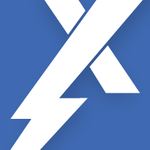

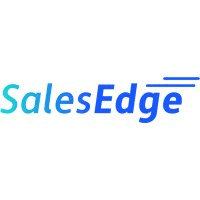
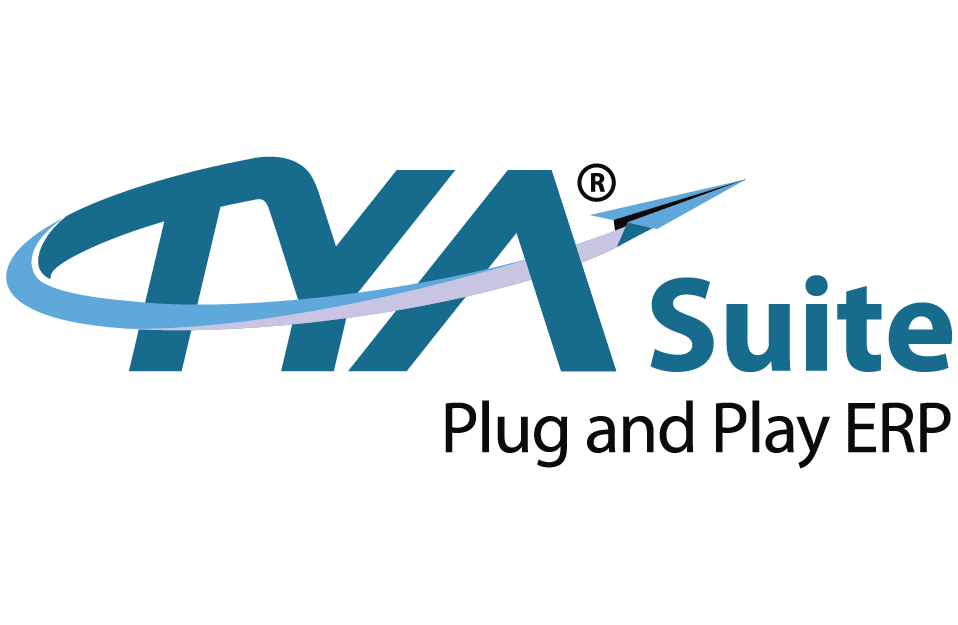
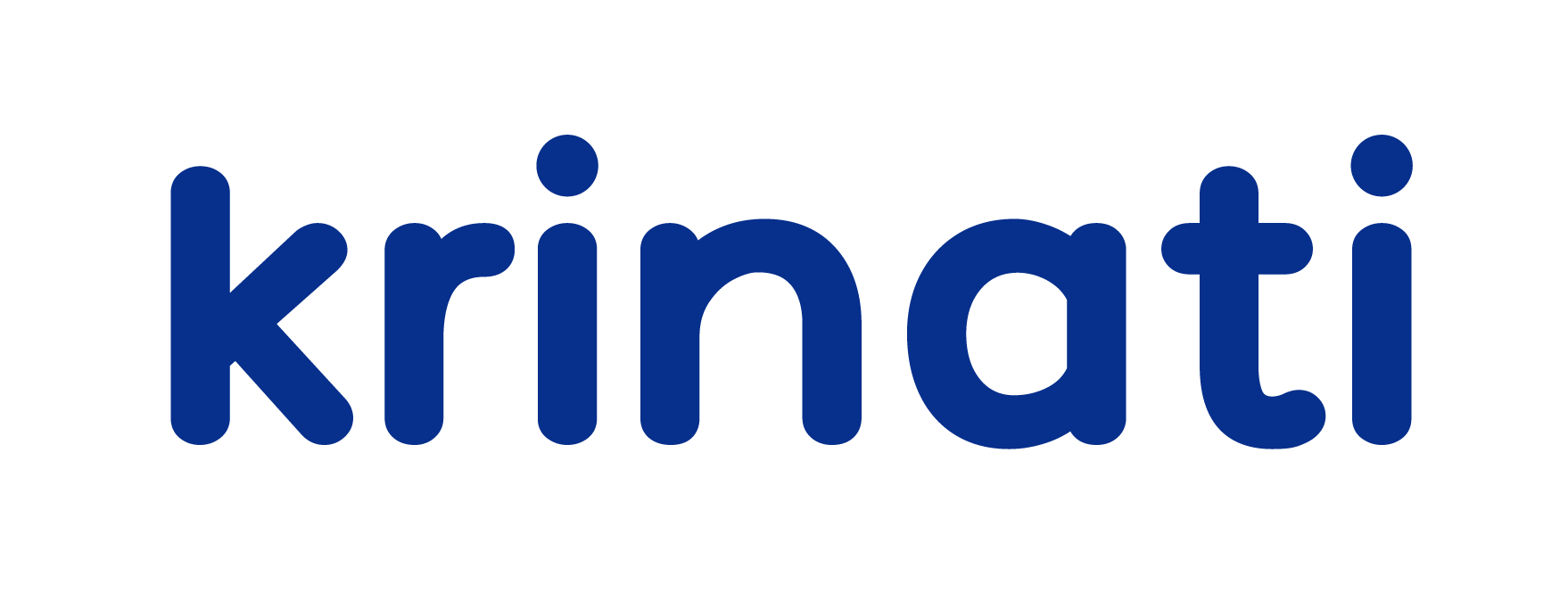


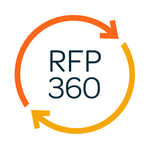




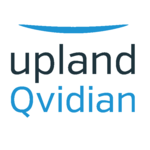

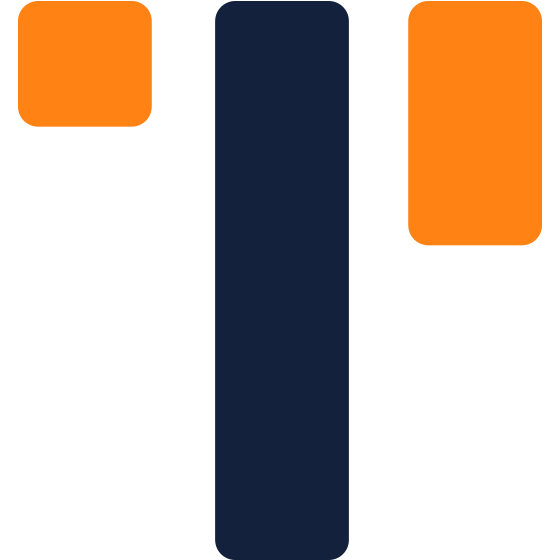
-logo.jpg)


